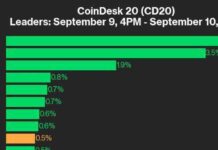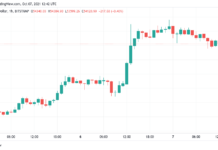Bitcoin’s price took a hit on August 1, dropping to nearly $62,000, its lowest level since mid-July. This decline was part of a broader trend in the cryptocurrency market, with the global market cap falling to $2.3 trillion and major coins like Ethereum and Solana also experiencing sharp drops. The stock market also saw a significant decline, with the Dow Jones Industrial Average shedding over 600 points.
The reasons for these market movements were a mix of economic data and geopolitical tensions in the Middle East. Investors reacted to weak data that suggested a possible economic contraction, leading to a sell-off in both stocks and cryptocurrencies. The Federal Reserve’s FOMC meeting on Wednesday also contributed to market jitters, although analysts believe that a September rate cut has already been factored into the market.
Despite the current volatility, some analysts remain bullish on Bitcoin’s long-term prospects. Singapore-based firm QCP Capital highlighted potential catalysts like the upcoming US election and the possibility of a sovereign Bitcoin reserve for the US. They suggest that establishing a “put” on BTC prices could have significant implications and make buying on dips a strategic investment approach.
As of Thursday afternoon, Bitcoin was trading around $63,007, showing some recovery from earlier lows. While the market remains on edge due to factors like daily ETH ETF outflows and supply pressures from Mt. Gox and the US government, there is optimism about Bitcoin’s future trajectory.
Overall, the recent market movements highlight the interconnectedness of global financial markets and the impact of various factors on asset prices. Investors will continue to monitor economic data, geopolitical developments, and central bank policies for clues about the direction of both stocks and cryptocurrencies in the coming weeks.














